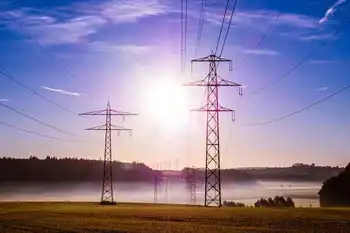Rhode Island power bills drop 16.5 per cent
By The Providence Journal
Substation Relay Protection Training
Our customized live online or in‑person group training can be delivered to your staff at your location.

- Live Online
- 12 hours Instructor-led
- Group Training Available
The state Public Utilities Commission unanimously approved an across-the-board rate decrease for National GridÂ’s 482,000 customers that went into effect April 1.
For residential customers, the standard offer rate — or the price of power without any surcharges factored in — will plummet 26 percent, from 9.4 cents per kilowatt hour to 6.9 cents. Most commercial and industrial customers will also experience decreases, but they will be smaller.
After transmission, transition, distribution and other surcharges are factored in, the electric bill for the typical residential customer that uses 500 kilowatt-hours a month will drop from $83.09 to $69.36, a 16.5-percent decrease. That $13.73 monthly savings will equal $164.76 over a year.
How is National Grid able to do this? The simple answer is that the power purchased by the company is cheaper this year. It actually hasnÂ’t been this cheap since 2004, when the standard offer rate was 6.7 cents per kilowatt-hour.
Part of the reason for the decrease is likely due to the price of natural gas. National Grid gets about a third of the power it provides Rhode Island from natural gas-fired power plants in New England.
The price of natural gas plummeted in 2009 to a seven-year low, according to ISO-New England, the independent, not-for-profit corporation that oversees the distribution of electricity throughout New England. It came up slightly last year, but nowhere near where it once was, and has stayed steady through the first three months of this year.
The standard offer rate in Rhode Island also dropped in 2009 after peaking in the second half of 2008 at 12.4 cents per kilowatt-hour. That peak was at a time when global energy prices had reached unprecedented highs.
After the decrease in 2009, weÂ’re seeing another big drop now.
“We’re looking at the lowest rates since 2004,” National Grid spokesman David Graves said. “That’s certainly good news for the customer.”
The cost of power, which was adjusted in the filing before the PUC, accounts for about 60 percent of most customersÂ’ bills. So that is the prime driver behind the overall decrease.
The other factor comes out of a second filing considered previously by the PUC. That one dealt with adjustments to all the surcharges National Grid assesses for the delivery of electricity. ThatÂ’s how the company turns a profit. By law, it is not allowed to mark up the price of power.
Changes in that filing included a lower transition charge, a higher transmission charge and a lower distribution charge. The effect overall was small, leading to a 1.6-percent decrease in residential bills. Last year, they went up 4 percent.
There was also another change in the second filing thatÂ’s interesting. Instead of paying a renewable-energy surcharge, which over the past year stood at 0.12 cents per kilowatt-hour, customers will get a small credit of 0.031 cents per kilowatt-hour. For the typical customer, that will amount to a credit of about 80 cents a month or a little less than 1 percent of their bill.
The reason for the credit is a little complicated. As part of Rhode Island’s Renewable Portfolio Standard — state policy designed to gradually increase the amount of clean power used by the state — National Grid was required in 2010 to buy 4.5 percent of its power from wind turbines, solar arrays, hydropower systems and the like.
The company purchases the power from sources all over the Northeast through what are known as Renewable Energy Certificates. It uses money raised from the renewable-energy surcharge to purchase RECs.
In 2010, the certificates were cheaper than National Grid had projected, so it finished the year with a $5.5-million surplus in that account. It will roll that money over to purchase RECs over the next calendar year, so customers wonÂ’t have to pay. They will also get a small amount of money in return. The credit will remain in effect through March 31, 2012.











